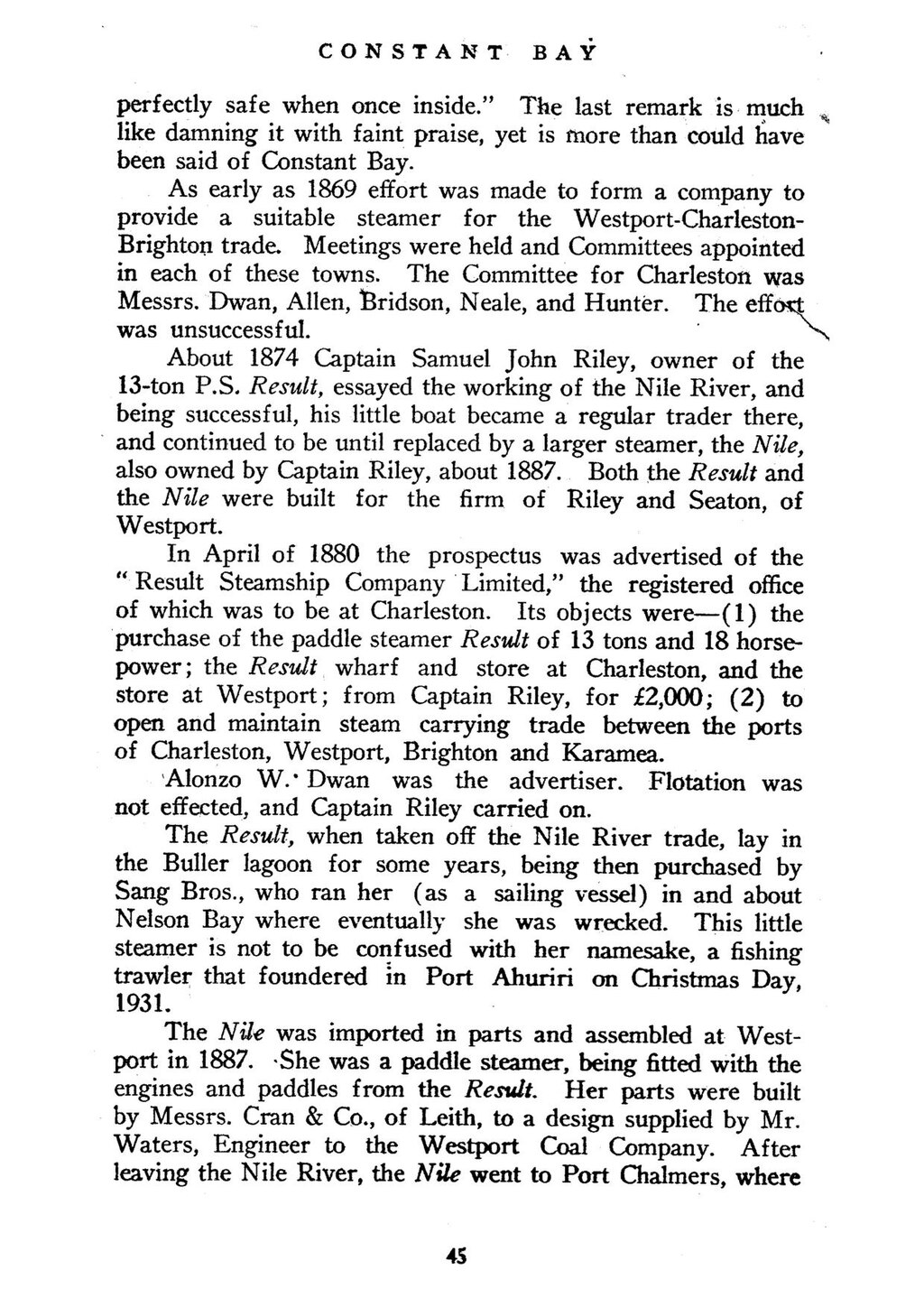CONSTANT BAY
perfectly safe when once inside.” The last remark is much like damning it with faint praise, yet is more than could have been said of Constant Bay.
As early as 1869 effort was made to form a company to provide a suitable steamer for the Westport-Charleston-Brighton trade. Meetings were held and Committees appointed in each of these towns. The Committee for Charleston was Messrs. Dwan, Allen, Bridson, Neale, and Hunter. The effort was unsuccessful.
About 1874 Captain Samuel John Riley, owner of the 13-ton P.S. Result, essayed the working of the Nile River, and being successful, his little boat became a regular trader there, and continued to be until replaced by a larger steamer, the Nile, also owned by Captain Riley, about 1887. Both the Result and the Nile were built for the firm of Riley and Seaton, of Westport.
In April of 1880 the prospectus was advertised of the “Result Steamship Company Limited,” the registered office of which was to be at Charleston. Its objects were—(1) the purchase of the paddle steamer Result of 13 tons and 18 horse-power; the Result wharf and store at Charleston, and the store at Westport; from Captain Riley, for £2,000; (2) to open and maintain steam carrying trade between the ports of Charleston, Westport, Brighton and Karamea.
Alonzo W. Dwan was the advertiser. Flotation was not effected, and Captain Riley carried on.
The Result, when taken off the Nile River trade, lay in the Buller lagoon for some years, being then purchased by Sang Bros., who ran her (as a sailing vessel) in and about Nelson Bay where eventually she was wrecked. This little steamer is not to be confused with her namesake, a fishing trawler that foundered in Port Ahuriri on Christmas Day, 1931.
The Nile was imported in parts and assembled at Westport in 1887. She was a paddle steamer, being fitted with the engines and paddles from the Result. Her parts were built by Messrs. Cran & Co., of Leith, to a design supplied by Mr. Waters, Engineer to the Westport Coal Company. After leaving the Nile River, the Nile went to Port Chalmers, where
45
